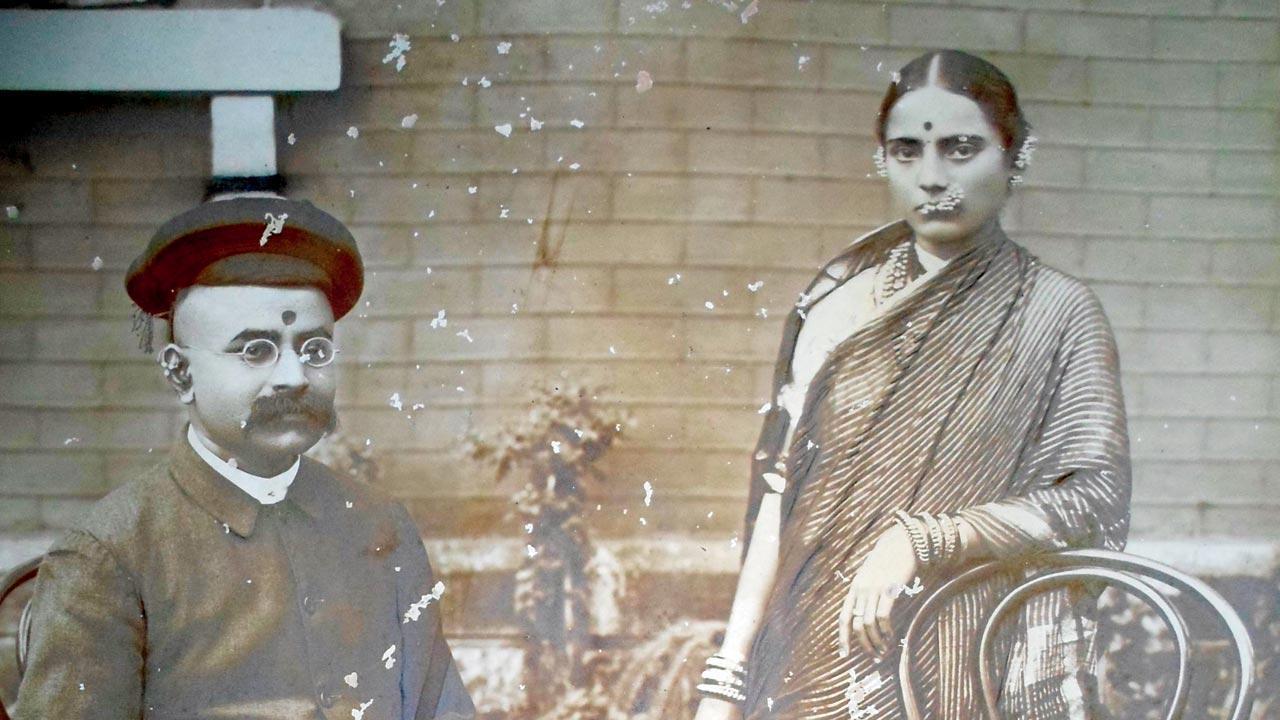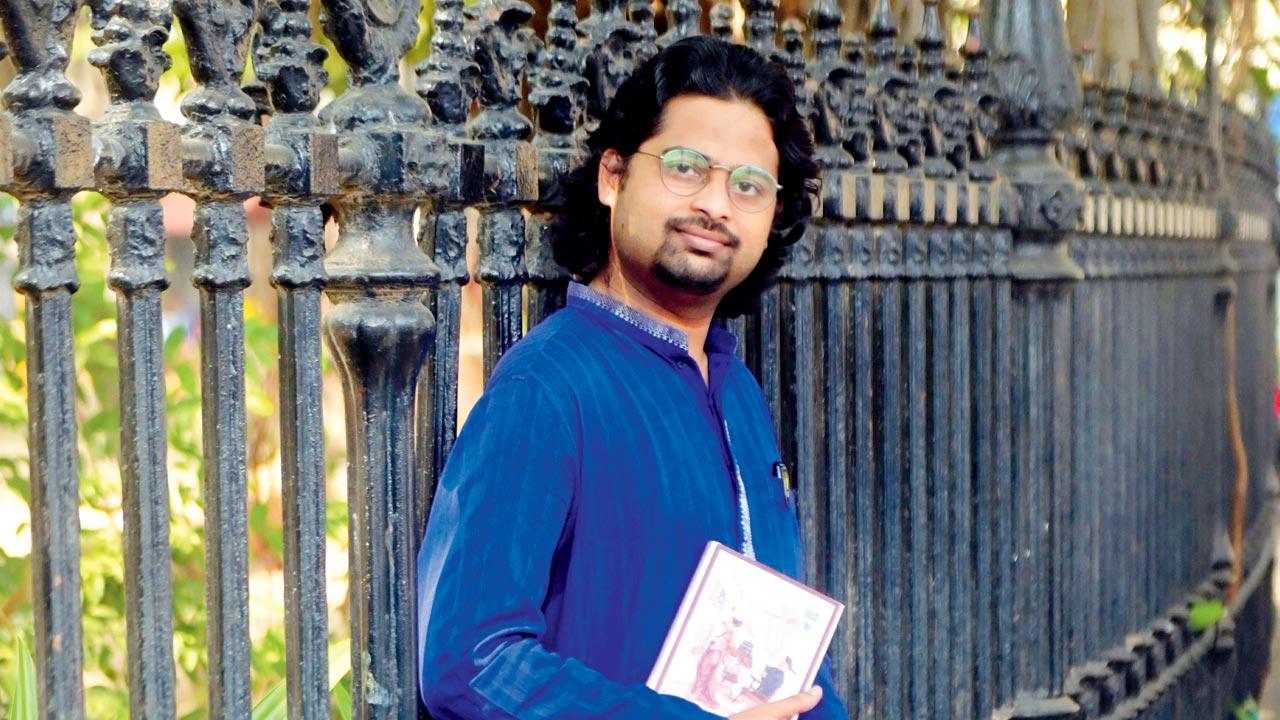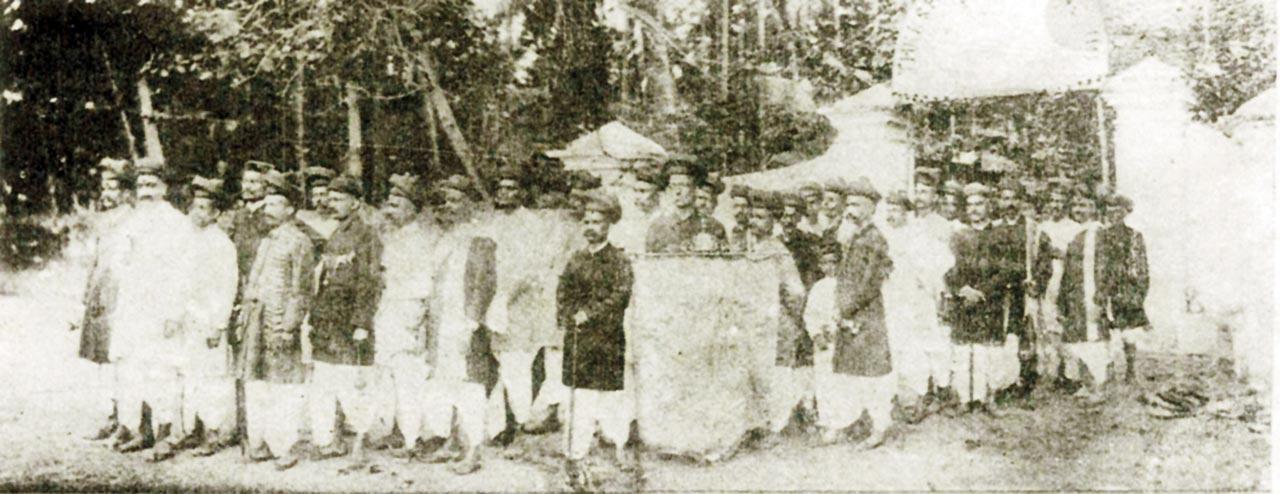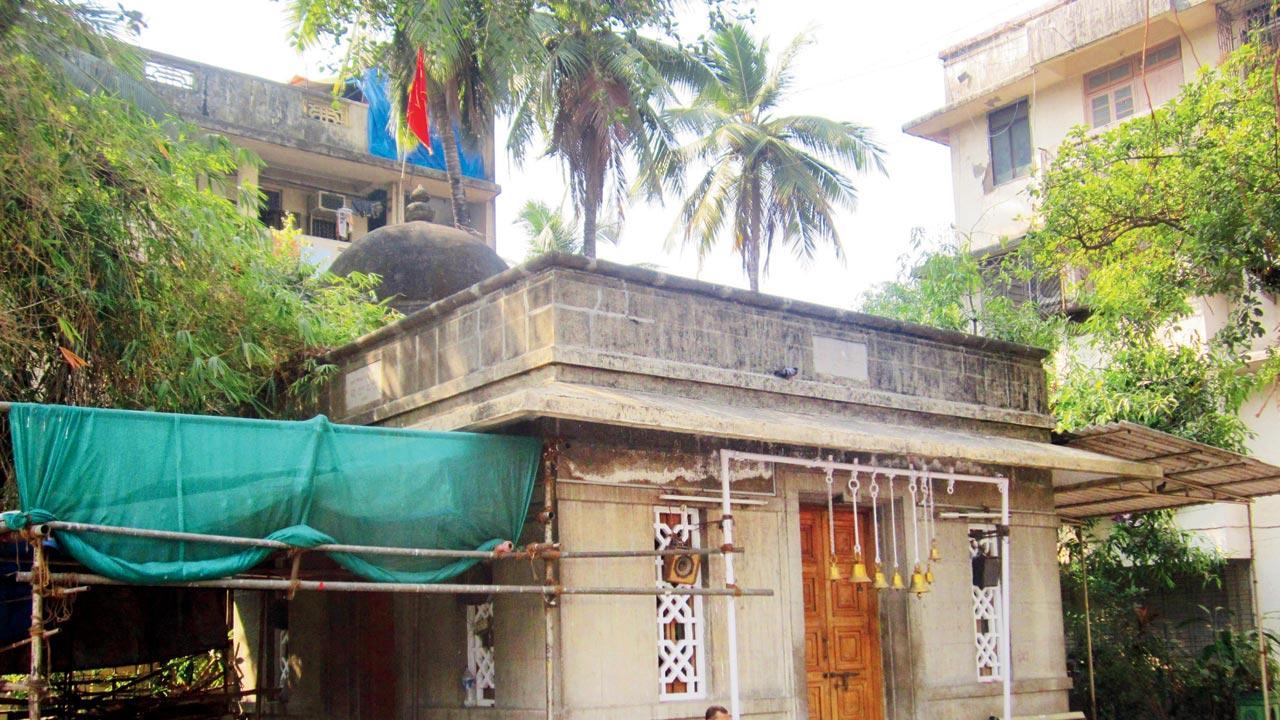A historian’s new book confirms a long-held legend about the Pathare Kshatriyas, who followed their leader from Champaner to make this new land their home

A Pathare Kshatriya couple from Bombay. Pics courtesy/Sandeep Dahisarkar
For over a decade now, Indologist and art historian Sandeep Dahisarkar has been on an unusual pursuit, attempting to retrace the footsteps of his ancestors, the Pathare Kshatriyas, who made Mumbai their home nearly 10 centuries ago. His research got the much-needed boost, when he received the Gulestan Billimoria Junior Research Fellowship by the Asiatic Society of Mumbai in 2017. “After that, for about a year, I only focused on this subject, [the cultural history of my community in the Bombay presidency]. I submitted the research in 2018, but felt the need to publish it, and make it accessible to everyone,” shares Dahisarkar, when we meet him on a weekday afternoon inside the Town Hall, where he has spent endless hours poring over old records for his work. “There are barely any books on the Pathare Kshatriyas in English. Of course, Rao Bahadur Yeshwantrao Harishchandra Desai [engineer of the Gateway of India] and Gajanan Govind Naik had published their works in Marathi. But, their sole purpose was documentation of community records.”
ADVERTISEMENT
Dahisarkar, on the other hand, wanted to explore the entire gamut of the community’s experiences, travelling back in time to reconstruct the past, and understand how the Pathare Kshatriyas came to make present-day Mumbai their home. Some of the answers—a result of several years of meticulous research—can be found in his just released book, The Pathare Kshatriyas of Bombay (Sahit Prakashan). His findings are not just ground-breaking, but radical enough for the community to sit up and take notice, and re-examine their identities.
 The wada of the Naiks of Anjur, which is a 270-year-old structure in Bhiwandi
The wada of the Naiks of Anjur, which is a 270-year-old structure in Bhiwandi
The Bimbakhyana (The Tale of the Bimba Dynasty), also known as the Mahikavatichi Bakhar (The Chronicle of Mahim), compiled somewhere between the 15th and 16th centuries, guided his work. “This is one of the earliest Marathi documents that also records one of earliest known migrations to Bombay,” says Dahisarkar. “The Bakhar mentions two types of kshatriyas [warrior groups], Somavanshi and Suryavanshi, who travelled with Raja Pratap Bimba to the new land in the year 1138 CE. But, we never find any direct reference to the Pathare Kshatriyas, Pathare Prabhus, Suryavanshi Kshatriyas or Somavanshi Kshatriya Pachkalashis, all of whom claim to have migrated with Bimbadeva.” Nevertheless, Dahisarkar was curious to explore if there was more to this story. Incidentally, VK Rajwade’s version (1924) of the Bakhar maintained an exhaustive list of the gotra, pravara, and kuladevata (family god/goddess) of the 12 Suryavanshi and 25 Somavanshi families that migrated with Bimbadeva. “While going through this list, I learnt that the details of the gotra and kuladevata of one of the families matched my own. I found it fascinating. It meant that my ancestors were among those who came with Bimbadeva.” Dahisarkar then accessed the census of every community, and based on the list he had with him, started identifying more such families. By the end of it, he was able to trace 29 of the 66 migrated families, belonging both to the Somavanshi and Suryavanshi groups. Dahisarkar says that historically it was believed that all Pathare Kshatriyas were only Somavanshi. This book throws new light. “It appears that these other specific identities [Pathare Kshatriyas and Pathare Prabhus, for instance] got developed in the medieval period, but through this exercise, I was able to prove that all the other groups were also part of the warrior groups that migrated here,” he adds.
According to the Bakhar, Raja Pratap Bimba originally hailed from Champaner in Gujarat. “He is said to have taken permission from his elder brother to expand the dynasty. But, instead of coming straight down, he first went to the city of Paithan [part of the Yadava dynasty then], after which he moved to Daman, before slowly conquering the provinces in the south till Walkeshwar,” shares Dahisarkar, who works as cultural consultant at the Holkar Cultural Centre, Maheshwar, Madhya Pradesh.
 Indologist and art historian Sandeep Dahisarkar has been researching about the Pathare Kshatriyas for over a decade. Pic/Bipin Kokate
Indologist and art historian Sandeep Dahisarkar has been researching about the Pathare Kshatriyas for over a decade. Pic/Bipin Kokate
The book, however, goes beyond the origin story. It also trains the lens on the community’s history in both, the medieval and modern times, commenting on the changing occupation of its members—from a group of warriors to skilled carpenters, before they became some of the most venerated architects and contractors, who were the force behind many iconic structures in the city. Dahisarkar also gives a glimpse of their culture, through their way of life, festivals, rituals, and temples.
The Pathare Kshatriyas are also known as Pachkalashis, because they were the only members from the warrior group to have been given a special throne with five kalashas and parasols, by Bimbadeva for their marriage ceremony. In one of the versions of the Bakhar, it’s said that the Kulaswamini of Bimbadeva came in his dream in 1183 CE and informed him about the beginning of the Islamic rule in Hastinapur. “In order to save the Kshatriyahood and its tradition, she ordered him to offer a throne during marriages to the Kshatriyas by making such provision with permission of the Shastras,” Dahisarkar writes in the book. While Dahisarkar wasn’t able to find any old pictures of these thrones, there have been multiple references to this particular marriage rite in historical texts.
 A Snehasammelan of Kshatriya Union Club, 1896
A Snehasammelan of Kshatriya Union Club, 1896
Some of the Pachkalashis became “sutars” or carpenters, despite belonging to a high caste, following the orders of Raja Bimba, who after “discussion with his minister”, decided he needed to build ships as his region was located near the sea. The selected members, four Kolamba and four Shilaika lineage persons, were assured that they’d still be part of the community, as they were only learning the art of carpentry for the “protection of their kingdom”. “This influenced their career choices in the later years as well. During the British period, we had several contractors and engineers from the community. Harishchandra Goregaonkar was the contractor for the Police Commissioner’s office, opposite Crawford Market, and architect GB Mhatre is most remembered for his Art
Deco structures.”
Pathare Kshatriya community members, he says, also took a natural shine to the arts, becoming writers, photographers, and sculptors. There’s Hari Keshavji (1794-1858), a modern Indian textbook writer and translator in the court of Sadar Adalat from Bombay city, and Rao Bahadur Ganapatrao K Mhatre (1879-1947), who became the first academic sculptor of pre-Independent India, and Shivshankar Narayan Mukadam, the first Indian photographer in Western India.
 The Dattatreya temple in Prabhadevi designed by architect GB Mhatre
The Dattatreya temple in Prabhadevi designed by architect GB Mhatre
Where the community was marred by loss of property and land, internal migration and conversion to Christianity during the Portuguese rule, the British Raj, particularly the 20th century, saw the Pathare Kshatriyas reclaim their glory. “Though still rooted to tradition, they were among the first to learn English and also absorb newer ways of living. Their dressing style changed. The men continued to wear their pagdis, but with coats and shoes.” He shows us a painting of a Pathare Kshatriya couple, which also makes it to the cover of his book, where the woman is seen wearing a traditional saree over a frilly puff sleeve blouse, depicting Victorian sensibilities. Adopting a new lifestyle, however, didn’t mean a change of allegiance. Dahisarkar says that the community saw 56 freedom fighters—VN Purao, Ramkrishna Chemburkar and Dr Rangnath Mhatre to name a few—who were part of India’s independence movement. Reformation was also at the heart of the community’s efforts. One of their oldest establishments, Kshatraikya Samaj or Kshatriya Union Club, founded in 1885 in Dadar, fought orthodoxy tooth and nail, focusing on “promoting female education, increasing the age of marriage for girls and boys, and stopping wrong practices observed during marriage ceremonies”.
In the book, he also discusses the most renowned families of the community—Desais of Malad, Naiks of Anjur, Ranes of Juhu, Mantris of Worli—and the sabha or panchayat system. “This system was very organised and produced documents, which were signed by every Mankari or a village representative. Such records were also maintained by the office of Desai of Malad, who presided over such meetings. It’s believed that the sabha started during Bimbadeva’s period and continued till early 20th century during the British rule. It lost its importance with the introduction of a uniform legal system,” says Dahisarkar.
With this book, he hopes that the community is able to appreciate its past, and take pride in its present. “We [the Pathare Kshatriyas] still don’t exactly know how we came to live in Bombay. There are several different theories. This research is primarily aimed at proving the historicity of the Mahikavatichi Bakhar, understanding which families migrated, and how this culture is different or similar from other warrior classes inhabiting Bombay. Most importantly I wanted to explore the contribution of the Pathare Kshatriyas in shaping and building this city along with other communities.”
 Subscribe today by clicking the link and stay updated with the latest news!" Click here!
Subscribe today by clicking the link and stay updated with the latest news!" Click here!







